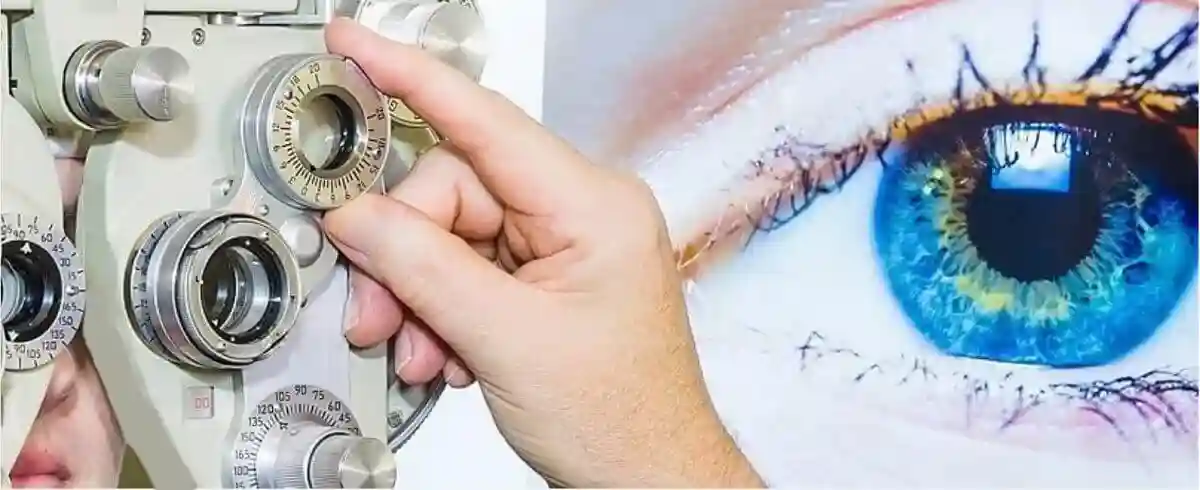Focused on your prescription eye sight solutions and eye health

Eye drops are sometimes used in standard eye examinations to allow dilated pupils as well as used in treatments for vision problems. We are also optical prescription spectacle makers, so please bring all your prescription spectacles, sunglasses, and any eye drops currently being used to your appointment, medication lists and family history details if relevant. That way, your sight can be focused comfortably after the exam and for possible increased temporary light sensitivity.

Eye health
Monitor

Kids vision
Childrens

Eye tests

Eye safety
EYE DROPS MAY AFFECT HOW YOUR SIGHT IS FOCUSED

Specific tests are used to evaluate your vision and assess for any abnormal eye health. Tests are catered for all ranges. Have your eyes checked especially regulary if you
Wear glasses or contact lenses or have a family history of eye disease or loss of vision
Take prescription medications. Assessment of your refractive error may result in an optical prescription for the sharpest, most comfortable vision.
READ MORE ABOUT DILATED PUPILS
Optometrists and Ophthalmologists regularly perform pupil dilation using eye drops to comprehensively examine the ocular fundus as part of a comprehensive eye health examination where clinically indicated.
Legal precedents overseas have recognised the lower risk of reactions precipitated by temporary pupil dilation versus the possibility of missed pathology.
Reversal of pupil dilation by different eye drops is not recommended as a standard procedure. This poses risks to the eye, such as secondary angle closure (about one in 5,000 though it can be treated) that outweigh any benefit gained.
A dilated pupil also enhances the image quality of any diagnostic imaging performed. For example, retinal blood vessel diabetic damage and cancerous lesions can be more likely observed,
Also, the dilated pupil gives more clues about the eye’s optics. Digital retinal imaging, tonometry pressure measurements and OCT scans can be better performed to assess and benchmark eye health and procedures under referral such as ultrasound and fluorescein angiography.
National Health and Medical Research Council (NHMRC) states, “Pupil dilation using 0.5 to 1.0% tropicamide is safe.” Two sizeable Australian population studies, Melbourne Vision Impairment Project
and the Blue Mountains Eye Study (MVIP2 and BMES3), showed high patient acceptance for pupil dilation. These and other population studies have also confirmed the safety of pupil dilation, despite the small risk of precipitating acute angle-closure glaucoma with tropicamide.
Patients are first screened for narrow anterior chamber angles under microscopy. Vision can be blurred from dilated pupils or more light-sensitive for up to 4-6 hours afterwards but is not done if focused driving standards cannot be preserved or a driver is not present. Where possible, this conversation occurs before the appointment.
Information on general patient health, including (known) current medicines, is always relevant (to minimise the risk of drug interactions by highlighting any contraindications to dilation)
Any patient can refuse to have their pupils dilated despite optometrist recommendation, including the risk to the patient that pathology may go undetected without dilation.
Tropicamide is an anti-muscarinic drug that blocks the responses of the sphincter muscle of the iris and the accommodative muscle of the ciliary body (mildly) to cholinergic stimulation, producing mydriasis within 20-40 minutes of instillation and (weak) cycloplegia maximal within 30 minutes. Both effects usually last up to 6 hours. Tropicamide can raise intraocular pressure in eyes with open-angle glaucoma.
This pressure elevation is usually less than five mmHg and can be considered insignificant in most patients since it will subside in several hours.
Prior instillation of a topical anaesthetic increases the speed of onset of both tropicamide by reducing any irritation caused by the medication and enhancing corneal permeability.
Angle-closure glaucoma precipitated through dilation with tropicamide is most likely to occur within an hour of initial instillation. If intraocular pressure has not risen significantly in the first hour, the probability of angle-closure occurring is extremely low. Prescription eye drops and lasers can be used in such situations.

Suffice to say, just as not all lenses are the same, nor are eye examinations Nor the time involved and rebates, e.g. for digital retinal imaging and scans. Every eye is different, and its optical prescription will change over time. Colour vision can even alter due to various conditions.
The evolution of new technologies enables the complete examination beyond comfortable, focused sight.

Your eye care needs to be tailored and not directed to a 30 minute or any other timeline. Australian population studies have shown high levels of patient acceptance for pupil dilation and have confirmed the safety of pupil dilation with higher pathology detection being possible. Should the driving standard not be assured from the temporary pupil dilation, sometimes another time can be scheduled to accompany a driver.
Your regular eye exam and cost
READ MORE
Should the scheduled fee be charged, you will be entitled to the Medicare rebate. If you are bulk billed, a lower amount is paid to the optometrist by the Government instead. This claim amount has not changed with CPI in decades due to government restrictions (but is being lobbied for.) Costs have increased with the evolution of new technologies, which also vary widely and often misrepresented or understood. All health funds may not cover some eye health costs, such as specific diagnostic imaging and OCT scans.
These are not as familiar to many as the focused sight tests.
Any extra fees that could be considered would be explained and optional. Some lenses and frames could easily be selected, that is, say, 10x or more than the more basic offerings, so it all depends on features and benefits. We will explain fees to your satisfaction, depending on your particular situation, whatever your eye problems and eye conditions. Medicare pays your optometrist who sees more patients per hour more than if fewer are seen, assuming patients have a valid medicare card. Some people have an eye disease that requires ongoing management (such as glaucoma or diabetic eye disease). If so, you can be tested and claim a rebate more often, as needed for your condition. Some contact lens conditions attract a more generous rebate than others.
Regarding clients using their frames, this may not always be possible, and there may sometimes be a fitting fee for using an old frame. Please note in reusing your private frames to check with your Optometrists about costs. There are some additional costs associated with fitting a pair of lenses into frames from another supplier, as well as warranty issues when a patient supplies a frame that is not suitable for their lens prescription, and we not obliged to accept frames supplied by clients when supplying optical appliances through the Visioncare program.
Progressive lenses are not part of the program, and we don’t have any say on pricing for products out of the program’s product range or a clients eligibility. And clients will not be able to use any credits on the program’s product range.
There still is an eye health gap between Aboriginal and Torres Strait Islander Peoples and other Australians. An estimated 94% of vision loss among Aboriginal and Torres Strait Islander Peoples is preventable. Improvements in rates of eye examinations and treatments and waiting times compared with other Australians is required.
Identifying Aboriginal and Torres Strait Islander status can significantly positively impact Aboriginal and Torres Strait Islander eye health outcomes. Reporting access to eye health services by identifying Aboriginal and Torres Strait Islander status is an essential step to close the gap for vision.
The marketing of eye examinations and spectacles broadly is too often very simplistic and can be misleading. The schedule fee for a standard examination is $75.75 We have spectacles in all price points and options. We have no gap options and even government-assisted free spectacles. Your eye exam to best fit your life and health care can sometimes be bulk-billed however medicare has restrictions on cardholders when this can be done and which tests are bulk billed.
The aim of any corrective lenses is that, together with the cornea and lens, focused rays of light on the retina are achieved. Imperfections there or on the visual pathways to the brain can also affect a person’s sight. Advanced three-dimensional maps can be created to measure any inconsistencies in the cornea. Sometimes a laser can reshape and resurface the cornea. Today’s technologies allow many diagnostic and corrective procedures to enhance and preserve sight and eye health.
